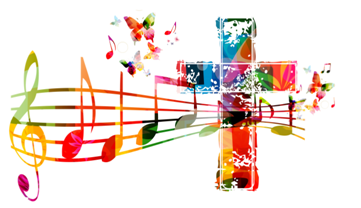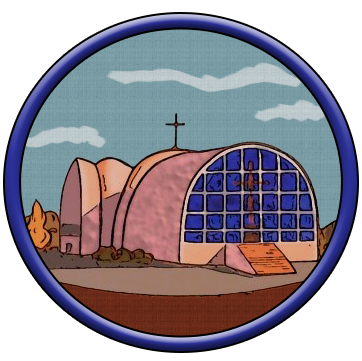The Resurrection of Our Lord
Pascha – The Great Day
 On the Great and Holy Feast of Pascha, we celebrate the life-giving Resurrection of our Lord and Savior Jesus Christ. This feast of feasts is the most significant day in the life of the Church . It is a celebration of the defeat of death, as neither death itself nor the power of the grave could hold our Savior captive. In this victory that came through the Cross, Christ broke the bondage of sin, and through faith offers us restoration, transformation, and eternal life. This meaning of Christ’s Resurrection, this great joy, is the central theme of Christianity; the frame of reference of everything else, is the Resurrection of Christ. On this day we sing: “Christ is Risen!” “Христос Воскрес !”
On the Great and Holy Feast of Pascha, we celebrate the life-giving Resurrection of our Lord and Savior Jesus Christ. This feast of feasts is the most significant day in the life of the Church . It is a celebration of the defeat of death, as neither death itself nor the power of the grave could hold our Savior captive. In this victory that came through the Cross, Christ broke the bondage of sin, and through faith offers us restoration, transformation, and eternal life. This meaning of Christ’s Resurrection, this great joy, is the central theme of Christianity; the frame of reference of everything else, is the Resurrection of Christ. On this day we sing: “Christ is Risen!” “Христос Воскрес !”
The day that gives meaning to all days and therefore to all time, is that yearly commemoration of Christ’s Resurrection at Easter. This is always the end and the beginning. We are always living after Easter, and we are always going toward Easter.
Easter is the earliest Christian feast. The whole tone and meaning of the liturgical life of the Church is contained in Easter, together with the subsequent fifty-day period, which culminates in the feast of the Pentecost, the coming down of Holy Spirit upon the Apostles. This unique Easter celebration is reflected every week in the Christian Sunday, Resurrection Day. Every week the Church comes to the same central experience; every Sunday is dedicated to the resurrection of Christ, so that we never lose sight of the centrality of Christ’s victory over death. Every week, the same fundamental fact of our Christian faith is proclaimed: Christ is risen! St. Paul says: “If Christ is not risen, then your faith is in vain.”
The Resurrection of Jesus Christ is the fundamental truth and absolute fact of the Christian faith. It is the central experience and essential teaching of the Church. It confirms the authenticity of Christ’s remarkable earthly life and vindicates the truth of His teaching. It seals all His redemptive work: His life, the model of a holy life; His compelling and unique teaching; His extraordinary works; and His awesome, life-creating death. Christ’s Resurrection is the guarantee of our salvation. Together with His Ascension it brings to perfection God’s union with us for all eternity.
There is nothing else to believe. This is the real center, and it is only in reference to Easter as the end of all natural time and the beginning of the new time in which we as Christians have to live, that we can understand the whole liturgical year. If you open a calendar, you will find all our Sundays are called Sundays after Pentecost, and Pentecost itself is fifty days after Easter. Pentecost is the fulfillment of Easter. Christ ascended into heaven and sent down His Holy Spirit. When He sent down His Holy Spirit into the world, a new society was instituted, a body of people, whose life, though it remained of this world and was shared in its life, took on a new meaning. This new meaning comes directly from Christ’s Resurrection.
The Resurrection made possible the miracle of the Church, which in every age and generation proclaims and affirms “God’s plan for the universe, the ultimate divinization of man and the created order.” The profound experience of and the unshakable belief in the risen Lord enabled the Apostles to evangelize the world and empowered the Church to overcome paganism. The Resurrection discloses the indestructible power and inscrutable wisdom of God. It disposes of the illusory myths and belief systems by which people, bereft of divine knowledge, strain to affirm the meaning and purpose of their existence. Christ, risen and glorified, releases humanity from the delusions of idolatry. In Him grave-bound humanity discovers and is filled with incomparable hope. The Resurrection bestows illumination, energizes souls, brings forgiveness, transfigures lives, creates saints, and gives joy.
We are no longer people who are living in time as in a meaningless process, which makes us first old and then ends in our disappearance. We are given not only a new meaning in life, but even death itself has acquired a new significance. In the Troparion at Easter we say, “He trampled down death by death.” We do not say that He trampled down death by the Resurrection, but by death. A Christian still faces death as a decomposition of the body, as an end; yet in Christ, in the Church, because of Easter, because of Pentecost, death is no longer just the end but it is the beginning also. It is not something meaningless which therefore gives a meaningless taste to all of life. Death means entering into the Easter of the Lord. This is the basic tone, the basic melody of the liturgical year of the Christian Church. Christianity is, first of all, the proclamation in this world of Christ’s Resurrection.
Our spirituality is paschal in its inner content, and the real content of the Church life is joy. We speak of feasts, and this Feast is the expression of the joyfulness of Christianity!
Adapted from:
Great and Holy Pascha – Greek Orthodox Archdiocese of America (goarch.org)
Excerpts from the lecture “The Sanctification of Life” on the Third Annual Church School Conference sponsored by the Metropolitan Council Religious Education Committee, July 1963 by Alexander Schmemann
Did you know? . . . The week after Easter is called Bright Week. The royal doors and the deacon’s doors remain open during Bright Week to show us that because of the Resurrection, heaven has been opened to all.
Did you know? . . . The royal doors and deacon doors close at Vespers on Bright Saturday, the end of Bright Week, because just like our forefathers Adam and Eve, we cannot remain in paradise in this life, because of our sins. Ours is a life of struggle against our passions, which hold us back from full realization of paradise in this life.
By the hand of Father Luke Dingman, www.lukedingman.com
In traditional iconography, the actual moment of the Resurrection of Christ was never depicted. The Gospels and Church Tradition are silent about that moment and do not say how Christ arose. Neither does the icon show it.
The action of the event takes place in the depths of the earth, in Hades, shown as a gaping black abyss. In the centre of the icon is the figure of the Saviour. He appears in Hades not as its captive, but as its Conqueror and Deliverer, as the Master of life. He is surrounded by a radiant mandorla with rays issuing from the centre of the mandorla. His garments are not those in which He is portrayed during his lifetime. They are brilliant white.
The darkness of Hades is filled by the light of these Divine rays. Christ tramples underfoot the two crossed boards of Hades’ doors that He has pulled down. In many icons, below the doors, in the black abyss, the cast down figure of the prince of darkness, Satan, is seen. The power of Hades is destroyed. This is symbolized by the keys, nails, and so forth.
Christ raises Adam from the grave with His right hand and Eve with His left hand. By this he frees Adam’s soul and with it the souls of all those who wait for His coming with faith. This is why, to the right and left of this scene are shown two groups of Old Testament saints, with prophets at the front. On the left are kings David and Solomon in royal robes and crowns and in front of them, John the Forerunner (Baptist). On the right are the prophets. Seeing Him, they at once recognize Him as the One whom they had foretold.
By freeing the old Adam, and with him, the whole of humankind, He laid the foundation of a new life for all humankind. The spiritual raising of Adam is a symbol of the coming resurrection of the body, the first-fruit of which was the resurrection of Christ.
In the upper section of the icon, the two peaks of rock remind us that “the earth shook and the rocks were split” (Mt. 27:51) after the death of Christ. The dividing of the rocks also reminds us of the dividing of the waters of the Red Sea as the Israelites traveled from the slavery of Egypt to the freedom of the Promised Land.
Source: UCREC Saskatoon
